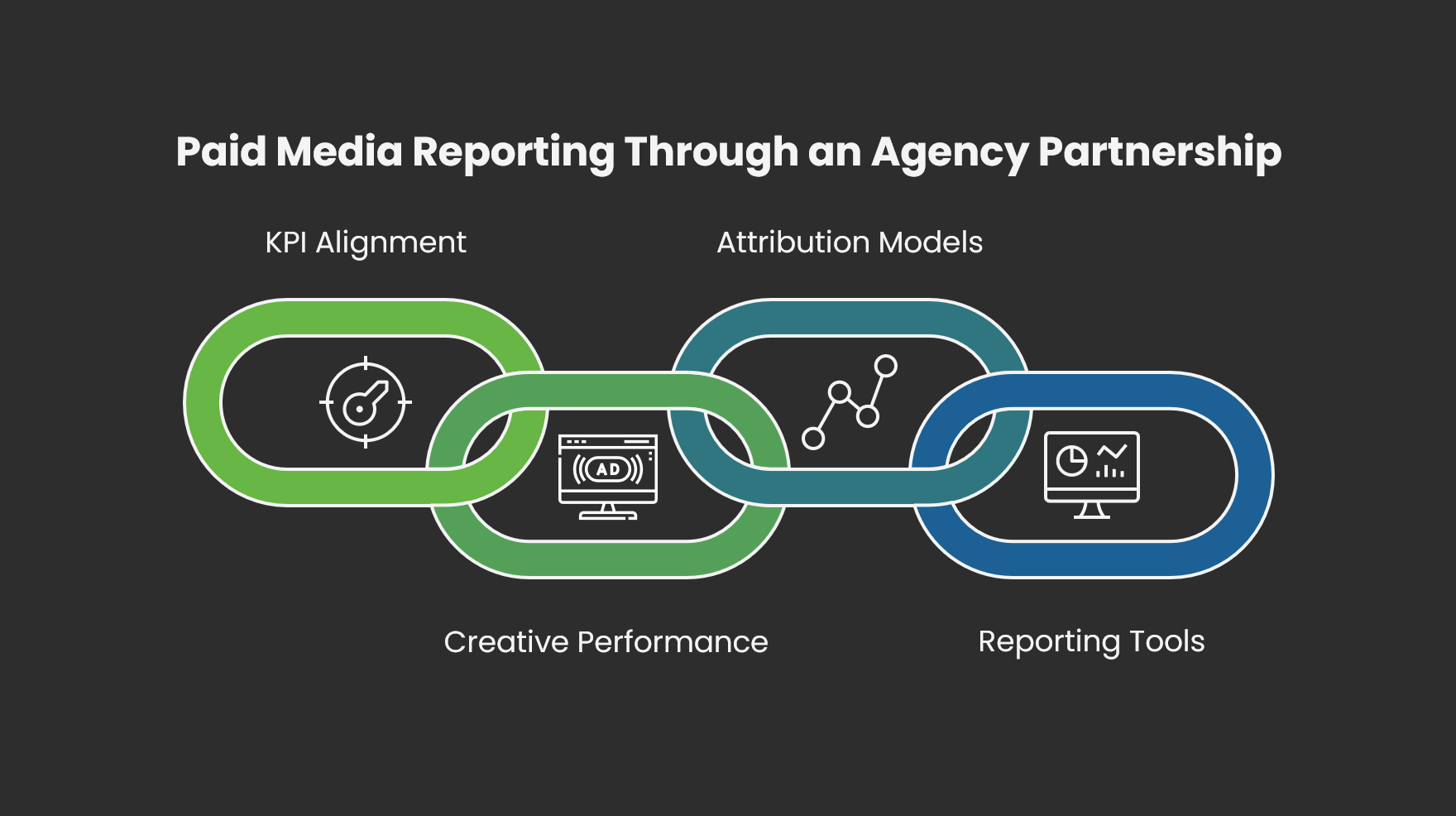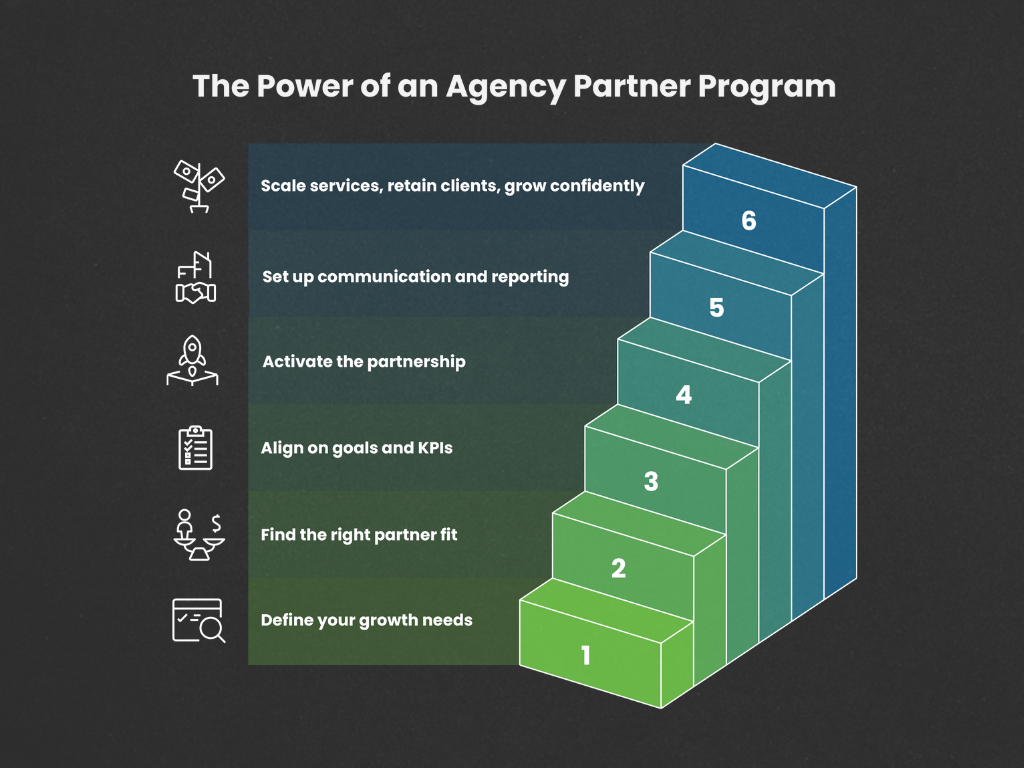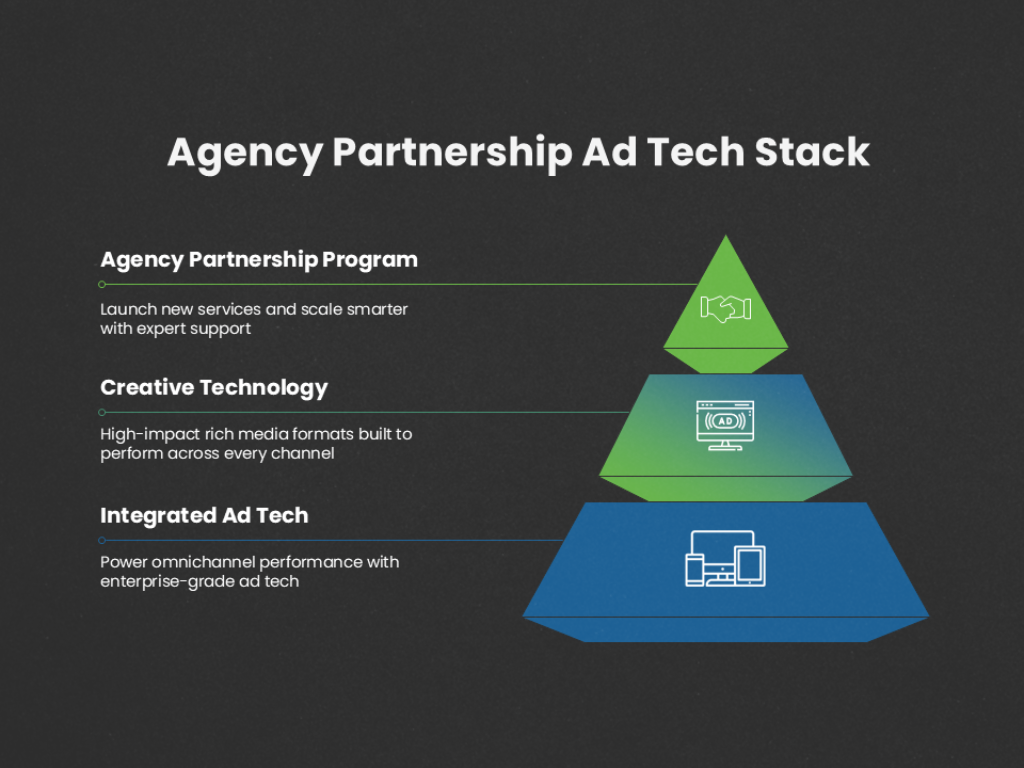
How Your Agency Can Measure Ad Performance & Campaign ROI
In the last post of our Agency Partnership Growth Series, we covered how an advanced ad tech stack paired with a trusted paid media management provider can help agencies scale faster and offer clients more impactful omnichannel campaigns. But delivering strong campaigns is only half the story. The other half is proving they worked.
Clients need more than metrics; they need insights they can act on. Interpreting data clearly and presenting it in a way that aligns with business goals requires more than a spreadsheet. According to Salesforce’s latest State of Marketing Report, only 31% of marketers are fully satisfied with their ability to unify customer data sources–and more than half rely on IT to access real-time data. These numbers highlight a deeper issue: decision-makers need data they can actually use, meaning reports that are visual, digestible, and connected to real outcomes.
This is where a paid media management partner becomes a valuable extension of your agency. By providing consolidated reporting, guidance on performance trends, and customized insights, a partner helps translate complexity into clarity so your team can provide better strategic value to your clients.
In this post, we’ll walk through the high-level reporting and attribution methods you can unlock through the right agency partner, and how they can help you showcase performance, track ROI, and strengthen client trust.
Defining Success Starts with the Right KPIs
Before measuring performance, you need to align on what success looks like with your clients with clear, measurable KPIs at the start of every campaign. A paid media management partner can help identify role-appropriate metrics across different channels and offer guidance on how to align those metrics with client business goals.
Here’s how KPIs vary across formats:
When you work with a partner who handles recurring performance reporting, your agency gains the ability to respond faster, optimize smarter, and build stronger reporting cycles into client relationships.
Creative Performance: What’s Working and Why
Creative quality is one of the biggest drivers of media performance. In fact, a meta-study from NCS first identified this in 2017, and after revisiting their analysis in 2023, creative was still driving 49% of incremental sales–more than any other advertising element. For creative agencies, this is both an opportunity and a challenge.
It’s one thing to build high-impact creative. It’s another to know how it’s performing, and why. That’s where a paid media management partner becomes a valuable asset.
Creative teams often face limited resources, fragmented data, and inconsistent metrics across platforms. eMarketer reported in March 2025 that 36% of content and creative professionals cite inconsistent metrics as a top challenge when measuring performance and ROI.
Partnering with a paid media team can relieve this burden. With this team, your agency can:
- Access real-time feedback on visuals, messaging, and placements
- Spot trends across different formats and audience segments
- Identify when and where ad fatigue is setting in
Your partner should also help you set up a structured A/B testing framework. This framework should allow your team to compare variants and iterate based on actual performance, turning creative into a measurable lever.
And most importantly, it builds a continuous improvement loop. Testing leads to better creative and better creative leads to better performance. This ultimately strengthens your role as a strategic partner to your clients.
Attribution: Connecting the Dots from Impression to Outcome
Measuring ROI starts with getting the right data infrastructure in place.
Before any attribution model can deliver value, you need conversion tracking set up properly. That means installing JavaScript or image pixels to track on-site activity and defining what counts as a conversion: a lead form, product page view, or purchase, for example. It’s also best practice to request access to your client’s Google Analytics account to review engagement metrics and validate conversion tracking.
Once the foundation is in place, your agency can unlock access to advanced attribution models and multi-channel reporting. Your paid media management partner can help orchestrate these tools to translate activity across campaigns and platforms into a story that makes sense to clients.
We’ll go over some advanced reporting solutions you can tap into.
Cross-Channel & Omnichannel Reporting
How are campaigns performing across all media channels?
With fragmented execution across programmatic, paid search, and paid social, many agencies struggle to consolidate reporting. A trusted partner helps centralize data from each channel into a single dashboard. This streamlines client reporting and provides a holistic view of performance.
You get a clear picture of what’s working across the full funnel and can identify where to reallocate budget, adjust messaging, or push high-performing channels further.
Brand Lift Studies
How did this campaign influence awareness, perception, or consideration?
Brand lift studies compare exposed and control groups to identify whether a campaign shifted brand perception, recall, or favorability. These insights are especially useful for awareness and upper-funnel campaigns.
Path-to-Conversion Reporting
What was the sequence of touchpoints that led to a conversion?
This model traces the steps a user took before completing a conversion. This helps you see the bigger picture, showing how different tactics contribute to the customer journey. For agencies, this report is ideal for explaining how awareness and consideration-stage tactics play a role in performance.
Multi-Touch Attribution (MTA)
How much credit does each channel or tactic deserve?
Rather than assigning full credit to a single touchpoint, MTA models allocate value across the entire conversion journey. This gives your team a more accurate view of which channels are driving performance and how they work together.
Partners can provide rule-based models (e.g., linear or time decay) or data-driven models, depending on your clients’ needs. It’s especially useful when clients ask, “Which tactic is working best?”
Media Mix Modeling (MMM)
How much did media contribute to business outcomes over time?
MMM uses historical data and statistical modeling to assess the impact of all media and external factors (seasonality, promotions, economic shifts). Agencies can use this to guide broader strategic planning, particularly for clients investing heavily in both brand and performance channels.
Incrementality Testing & Conversion Lift
Did this campaign drive lift, or would those conversions have happened anyway?
Incrementality testing isolates the true impact of a campaign by comparing results from exposed vs. holdout audiences. It’s particularly useful for validating retargeting and lower-funnel tactics. If your clients are asking for more proof of impact, this method provides one of the most defensible ways to show ROI.
Measurement in Focus
Through a trusted agency partnership, your team can build a reporting and attribution strategy that gives clients a clear view of what’s driving results. From cross-channel dashboards to advanced analytics, you’ll have access to tools that support smarter insights.
For advertising, creative, and full-service agencies looking to drive better results and retain high-value clients, advanced measurement and reporting tools are expected. And with the right support, you can deliver it without stretching your team or cutting into your margins.
Stay tuned for the final installment of our Agency Partnership Growth Series: How to Choose the Right Paid Media Partner to Scale Your Agency.


.svg)
.svg)



